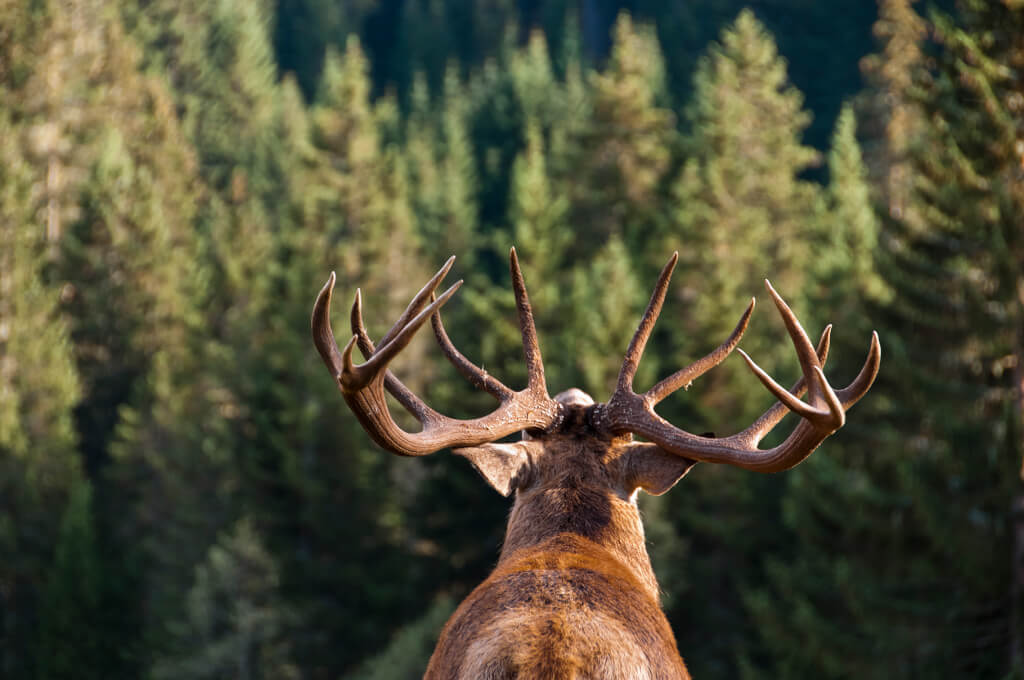Scientists bred horned mice: why this research is a breakthrough in medicine
A group of Chinese scientists transplanted deer genes into a mouse, thanks to which it grew antlers. Deer shed and regrow their antlers every year and it is one of the fastest growing tissues in the animal world. They hope their discovery could eventually lead to humans being able to regrow lost limbs. TVPWorld.

Photo: IStock
According to an article published in the journal Science, a group of Chinese scientists led by Toa Qin managed to grow "mini-horns" in mice by inserting deer genes into rodent genomes.
While some animals have amazing regenerative abilities, most mammals have lost them. Deer, however, shed and regrow their antlers every year, and this is one of the fastest growing tissues in the animal world. Deer antlers grow 2,75 centimeters a day.
A poignant story about how antlers grow
New horn growth begins at the stalk, a growing base attached to the skull, and is regulated by hormones such as testosterone, reports ZMEScience. The growth cycle coincides with the breeding season, so males have hardened horns that they can use to fight other males to establish dominance and win breeding privileges.
On the subject: Artificial intelligence develops treatment for liver cancer in 30 days
During the early growth cycle, the horns begin as bumps covered with a soft, velvety material containing blood vessels and nerves. This velvet helps supply the growing antlers with nutrients and oxygen, as well as protect them as they develop. When the antlers reach their full size, the velvet dries out and falls off in a process known as velvet moulting. At this stage, blood stops flowing to the horns, which are now fully mineralized bones. Finally, after the breeding season, the cells begin to demineralize the bone between the stalk and the horn, causing the connection between the horn and the skull to weaken and the horn to fall off.
This whole process is truly wonderful. It's like growing a whole femur in less than six months. But all this has its price.
In order to grow their valuable antlers, males have to siphon nutrients from other parts of the skeleton, causing reversible osteoporosis in other bones during the intense breeding season. The damage from the growth of horns is comparable to the period of pregnancy, which eloquently speaks of the tedious nature of the germination of bones from the forehead.
The team hopes that the rapid growth of the antlers can be used for other purposes. If the genes can be tuned correctly, it is hoped that they can be used to regenerate bones.
Mouse horns
Qin's team was able to isolate several distinct stem cells and genes that are critical to the development of sika deer antler tissue. They then cultured the isolated genes in a petri dish and transplanted them into the skulls of living mice.
Like the article? Support ForumDaily!?
These mice look very strange and unusual. You can look at them here.
Within 45 days of implanting a specific subtype of stem cells known as "antler blastema progenitor cells," the mice grew relatively large bumps on their heads that resemble early antler-like structures, complete with cartilage and bone. Stem cells harvested from shed antlers no older than five days gave the best results.
Wolfgang Pita Thomas, a neuroscientist at Washington University in St. Louis, for example, is fascinated by the fact that nerves inside horns regenerate ten times faster than nerves in humans. She is currently actively researching ways to translate this rapid growth into new treatments for our own nervous system that speed up the regeneration of damaged nerves, such as in cases of paralysis.
Horn tissue and bone tissue, although superficially similar, are not the same. However, the researchers found that the genetic mechanisms behind the rapid growth of antlers gave them insight that could be used in medicine applicable to humans, especially in bone growth.
This is not the first time scientists have tried to grow horns in mice. In 2020, another team, also from China, managed to grow antler stumps on mouse skulls after implanting deer antler tissue right under the forehead skin.
Since the underlying mechanisms underlying rapidly regenerating antler tissue may simply be dormant in other mammalian species, it is possible that pre-existing genes may be activated to allow regrowth of lost appendages.
You may be interested in: top New York news, stories of our immigrants, and helpful tips about life in the Big Apple - read it all on ForumDaily New Y.
Despite their outlandish appearance, the implanted mice are healthy, and the researchers hope to apply the findings to clinical bone repair and even limb regeneration. Clearly, scientists still have a long way to go before scientists can bridge the gap between growing horns in mice and rebuilding a missing limb in humans.
Read also on ForumDaily:
Deadly and treatment-resistant fungus is spreading rapidly across the US
How criminals steal our money: three schemes used by street thieves in the USA
Dying is not scary: scientists for the first time saw what the brain experiences during death
Subscribe to ForumDaily on Google NewsDo you want more important and interesting news about life in the USA and immigration to America? — support us donate! Also subscribe to our page Facebook. Select the “Priority in display” option and read us first. Also, don't forget to subscribe to our РєР ° РЅР ° Р »РІ Telegram and Instagram- there is a lot of interesting things there. And join thousands of readers ForumDaily New York — there you will find a lot of interesting and positive information about life in the metropolis.











